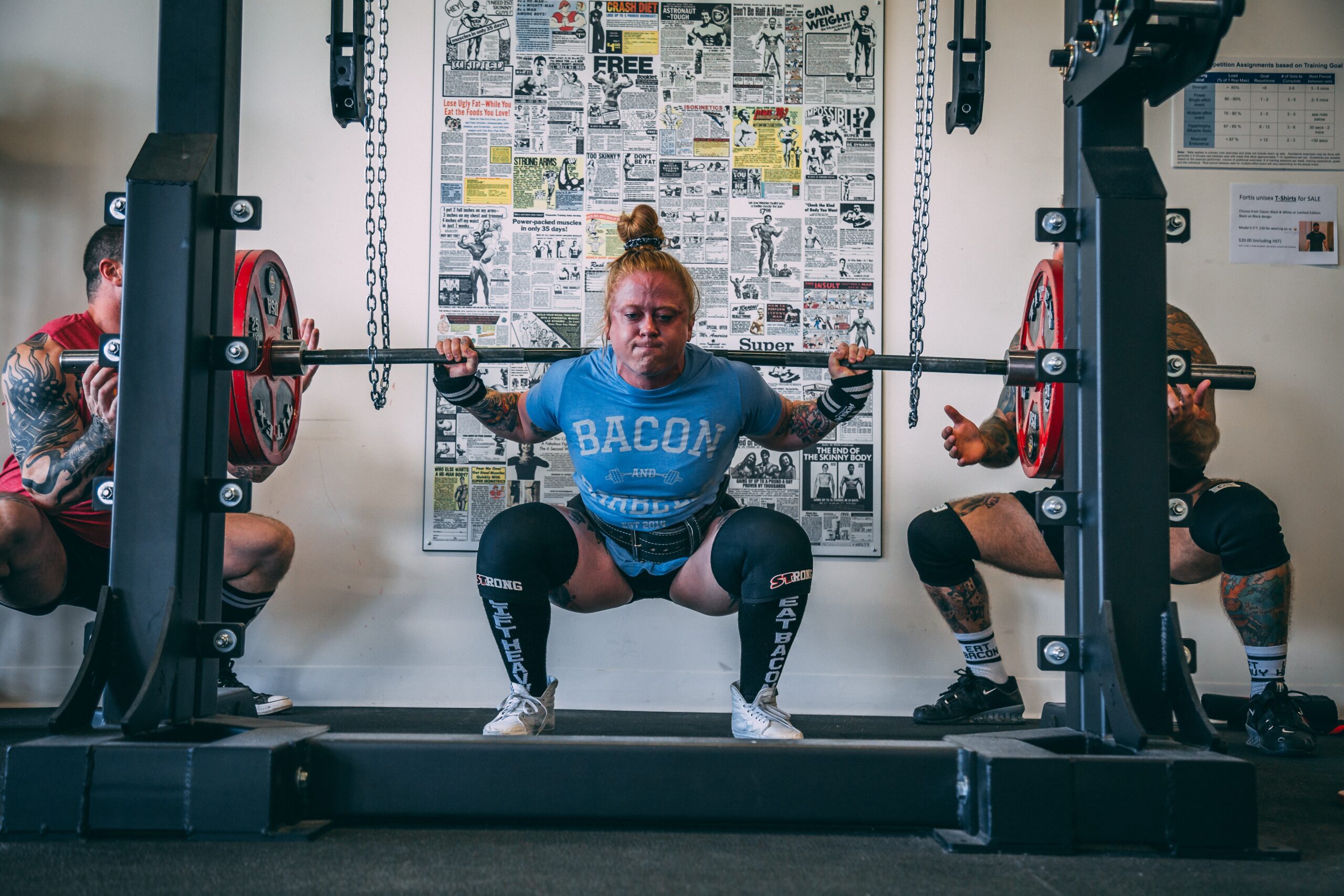Most resistance training systems were designed by strength coaches, powerlifters, Olympic weightlifters, bodybuilders, or personal trainers. Systems were, for the most part, originally designed to meet the needs and goals of specific groups, and the majority were designed One common mistake novice practitioners make is assuming that a system or technique used by a power-lifter, champion bodybuilder, Olympic weightlifter, or elite athlete is the best system or technique for a novice lifter or recreational athlete. Programs used by elite athletes are often too intense or have a high training volume that is not suitable for the novice athlete/client. The elite athlete has taken years of training to achieve the fitness levels necessary to tolerate and to make physiological adaptations to the programs they use. Elite Strength and power athletes may also have a genetic potential to tolerate the high-intensity or high-volume programs they use and still achieve gains in strength, power, and hypertrophy.
Research has shown that following a systematic, integrated training program and manipulating key training variables achieve optimal gains in strength, neuromuscular efficiency, hypertrophy, and performance.
There are numerous training systems that can be used to structure resistance training programs for a variety of effects.
The Single-Set System
The single-set system is a simple technique and it is one of the oldest resistance training systems. This system uses 1 set per exercise. It is usually recommended that single-set workouts be performed two times per week to promote sufficient development and maintenance of muscle mass. The single-set system has been shown to be just as beneficial for beginning-level clients for proper adaptive responses of the connective tissue and nervous system before engaging in more rigorous training systems. It is not a suitable system for more experienced and elite athletes/clients.
The Multiple-Set System
The second resistance training system is the multiple-set system. A multiple-set system can involve performing multiple sets with the same resistance or multiple sets with varying resistances (i.e., heavy to light, light to heavy), with varying numbers or the same number of repetitions per set, and with all, some, or no sets carried to volitional fatigue. For example, 3 sets of 10 repetitions (3 x 10), or 5 sets of 5 repetitions (5 x 5).Virtually any training system that consists of more than one set of an exercise can be classified as a multiple-set system. Multiple-set training can be appropriate for both novice and advanced clients/athletes but has been shown to be superior to single-set training for more advanced clients/athletes.
Split-Routine System
A split-Routine resistance training system is a program of weight training that divides training sessions by body regions—usually upper- and lower-body training. Split training allows you to follow the American Council of Sports Medicine (ACSM) Guidelines and allow at least 48 hours between resistance training exercise sessions for a major muscle group. there are four kinds of split routines system.
Upper Body/Lower Body Split: Alternating days of exercising the upper and lower body exercises. This is good for general fitness.
Push/Pull Split: This type of split works separates the exercises into one day of pushing exercises (including the chest, shoulders, triceps, squats, and lunges), and pulling exercises (e.g., curls, rows, pull-downs, or a dead-lift).
Antagonistic Muscles Split: Agonist and antagonist muscle groups are worked out each day, split into groups for three workouts per week or four workouts per week.
Advanced bodybuilding split: One major muscle group per day is targeted over the course of five-six days.
An example of an Advanced bodybuilding split:
- Day 1: Chest—4-5 exercises, 3-4 sets, 6-15 reps
- Day 2: Back—5 exercises, 3-4 sets, 6-15 reps
- Day 3: Shoulders, upper traps—4-5 exercises, 3-4 sets, 6-15 reps
- Day 4: Legs—5-6 exercises, 3-4 sets, 6-15 reps
- Day 5: Biceps, triceps—3-4 exercises each, 3-4 sets, 6-15 reps
- Day 6-7: Rest
The Circuit-Training System
The circuit-training system consists of a series of exercises that an individual performs one after the other, with minimal rest between each exercise.
This training system is proper for clients with minimal time available for resistance training, as well as any other type of fitness training. The circuit-training program includes a low to moderate number of sets ( 1 – 3 ), with moderate to high repetitions ( 8 – 20 ) and short rest periods (15–60 seconds) between exercises and with a resistance of 40 to 60% of 1RM.
This training system is more effective for endurance athletes such as running, cycling, elliptical training, or swimming.
Beginners circuit training routine: 0-30 second rest after each exercise and a 3 to 5 minute rest after each circuit.
- Squat Jumps: 10 to 15 repetitions
- Standard Push-ups: 10 to 15 repetitions
- Calf Raises: 15 to 20 repetitions
- Bench Dips: 10 to 15 repetitions
- Abdominal Crunches: 15 to 20 repetitions
- Jump Rope: 60 seconds
- Squat Jumps: 10 to 15 repetitions
- Standard Push-ups: 10 to 15 repetitions
- Calf Raises: 15 to 20 repetitions
- Bench Dips: 10 to 15 repetitions
- Abdominal Crunches: 15 to 20 repetitions
- Jump Rope: 60 seconds
Drop Sets
A drop-set is another resistance training system that is popular among bodybuilders. It is a simple technique that involves performing a set of an exercise to volitional fatigue, dropping some resistance (5–20%), and then perform another set of the same exercise (usually 2–4) to volitional fatigue. Normally, little or no rest is used between sets, and although any number of repetitions per set could be performed, 8 to 12are typical. This procedure can be repeated several times (typically 2 to 3 drops per set). According to Arnold’s Encyclopedia of Modern Bodybuilding, the drop set method was originally “discovered” in 1947 by Henry Atkins, editor of Body Culture magazine. Atkins called it the “multi-poundage system.” Since then, this muscle blasting technique has gone by many different names including breakdowns, descending sets, triple-drops, down the rack, strip sets, or the stripping technique.
Drop sets were a favorite of none other than Arnold Schwarzenegger. Thanks to Arnold popularizing the method, it’s a common sight in any gym today to see even recreational lifters doing barbell curl “stripping sets” as Arnold liked to call them.
Pyramid System
Many power-lifters and people are interested in increasing 1RM lifting ability use pyramid, systems. It is a Progressive or regressive step approach that either increases weight with each set or decreases weight with each set. In a light-to-heavy system, an individual typically performs 10 to 12 reps with a light load and increases resistance for each following set, until the individual can perform 1 to 2 reps, usually in 4 to 6 sets. The heavy to light system works in opposite direction, in which the individual begins with a heavy load (after a sufficient warm-up) for 1 to 2 repetitions, then decreases the load and increases the repetitions for 4 to 6 sets.
The Superset System
The last resistance training system is superset. A superset resistance training system is a form of strength training in which you move quickly from one exercise to a separate exercise without taking a break for rest in between the two exercises. There are multiple kinds of superset systems.
The first one includes performing two exercises for the same muscle group back to back (bench press and push-ups). This style of supersets can use two, three (a tri-set), or more exercises (a giant set) for the target muscle group. The second one performs two exercises back to back that involves antagonist muscle groups (e.g., chest and back or quadriceps and hamstring complex).
Performing supersets in this manner allows a significant load to be placed on the target muscle during each set. This is possible because while the agonist is working, the antagonist is recovering, and vice versa. This training system is popular among bodybuilders and may be beneficial for muscular hypertrophy and muscular endurance.
It was the 6 most important resistance training systems that each Personal Trainer and Strength Coach must know.
Pay attention: Rest is just as important as training. You never maximize muscle growth by training for two hours every day with just 6 hours of sleep per night. Learn to listen to your body. Most bodybuilding, general clients, or athletes sleep anywhere from 8 to 10 hours a night. Remember, anabolic growth hormone (GH) levels reach their peak in deep sleep. So STOP staying late and watching tv.
References:
- Kraemer WJ, Nindl BC, Ratamess NA, et al. Changes in muscle hypertrophy in women with periodized resistance training. Med Sci Sports Exerc. 2004;36:697-708.
- Rhea MR, Alvar BA, Burkett LN, Ball SD. A meta-analysis to determine the dose-response for strength development. Med Sci Sports Exerc. 2003;35:456-464.
- Kraemer WJ, Ratamess NA. Fundamentals of resistance training: progression and exercise prescription. Med Sci Sports Exerc. 2004;36:674-688.
- Designing resistance training programs / Steven J. Fleck, William J. Kraemer. — Fourth edition.
- NASM PERSONAL FITNESS TRAINING.National Academy of Sports Medicine, Jones & Bartlett Learning
- Abobakr Ravand, Circuit Training Exercise, International Association of Strength and Conditioning, https://iascfitness.org/circuit-training-exercise/
- Bill Geiger,The Ultimate Guide to An Effective Workout Split, www.bodybuilding.com
- Brad Walker, What is Circuit Training and Examples of Circuit Training Workouts, April 8, 2020.https://stretchcoach.com/articles/circuit-training/
- Plowman SA, Smith DL. Exercise Physiology for Health Fitness and Performance (Fifth Edition). LWW. 2017.







